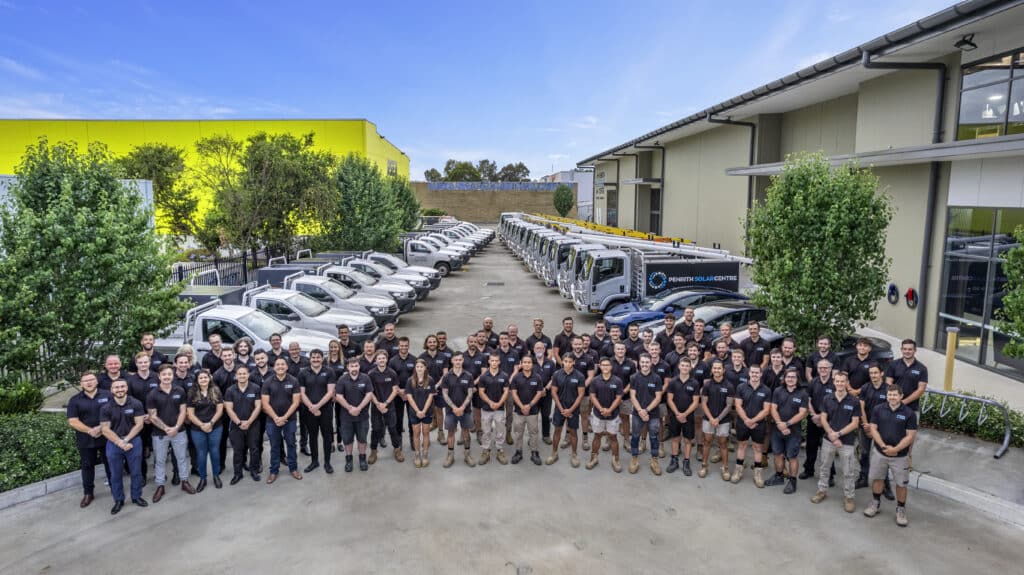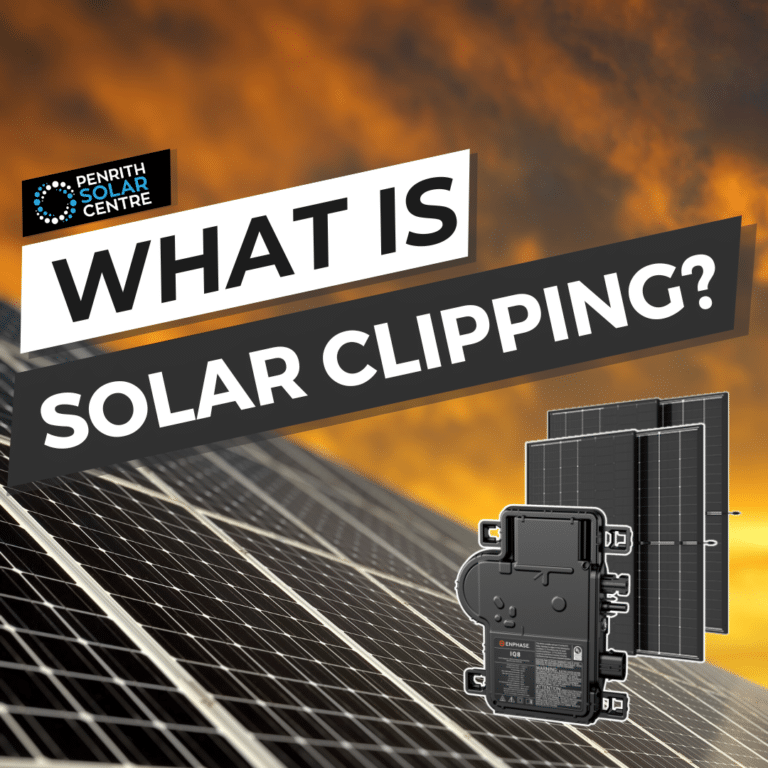
With over 30% of Australian homes covered in solar panels, buying a home with a previously installed system is becoming more and more normal. However, not every solar system is the same. Some systems last decades and others don’t. Which type of solar system are you inheriting when you purchase a home with solar included?
We have a lot of customers contact us to ask us about the different types of solar systems and whether they should get components or even the whole system replaced. It can be difficult to know what questions to ask about the solar system.
At Penrith Solar Centre, our goal is to help you understand every aspect of the solar industry so you can be informed as we work together to reach Net Zero by 2050. We also want to help you save a bit of money on your electricity bills as well. The goal of this article is to help you ask the right questions when it comes to evaluating the solar system on the house you’re about to purchase. Those questions will inform the decisions you make about electricity for years to come.
In this article, you will learn about why you must ask the following questions:
- Who Installed the Solar System?
- What Type of Solar System is It?
- When Was the System Installed?
- Are the Warranties Transferrable?
- How Many Kilowatts Does It Produce?
- Considerations About Solar Batteries
By the end of this article, you’ll know what to look out for when purchasing a home with solar already installed.
Who Installed the Solar System?
This is the most important component of any solar system installation. When you’re dealing with an existing solar system, it’s even more crucial. A poorly installed solar system can be unreliable, under-performing, and sometimes even unsafe.
In order to be able to install solar systems in Australia, an electrician must be certified by the Clean Energy Council. From there, an electrician can either work for an in-house solar installer like Penrith Solar Centre or hang up a shingle for a solar sales company and work for them (or multiple solar sales companies) as a subcontractor.
An in-house installer is a full-service, inquiry to installation solar systems service. An in-house installer will quote you based on your needs, install the solar system, and cover all warranties on your behalf. Penrith Solar Centre also has an additional workmanship warranty.
All warranties for installations with Penrith Solar Centre are transferrable from one owner to the next.
A subcontractor working for a solar sales company is a different business model. In this installation practice, a solar sales company will work with you to determine your solar needs. Then they will hire a subcontractor to install the system.
This is a very common type of installation in Australia, especially because of the popularity of string inverter systems (we’ll get to those in a bit). Subcontractors are popular because of how economical their installations are for customers. However, the process of getting warranties fulfilled can be complex and time consuming.
When purchasing a home with solar, you’ll want to learn whether the installation was done by an in-house team or a subcontractor. If it’s an in-house team, there’s a very good chance that they will assist with the transfer of the system and the warranties (if they’re still in effect).
If the solar system was installed by a subcontractor, you’ll need to find out if they are responsible for any existing warranties or if the solar sales company will fulfil them. Often, there’s a disconnect between the subcontractor and the sales company with neither of them taking responsibility for repairing the system. This can lead to a very frustrating round-robin of phone calls and delays in getting your system up and running again if it requires repairs of any kind.
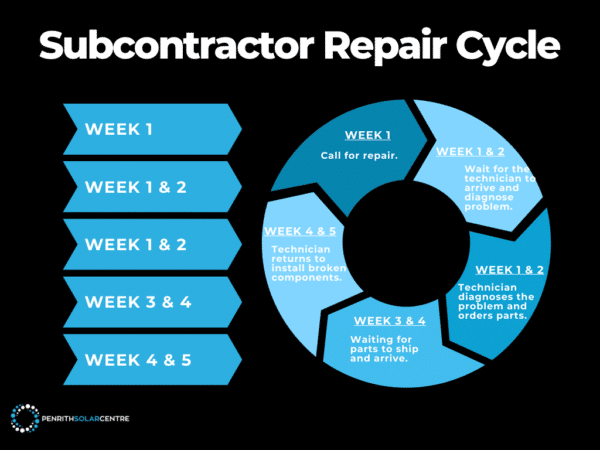
If you’re interested in learning more about the differences between in-house installers and subcontractors, you might want to check out the following article titled, In-house Installers vs. Subcontractors: Which is Better?
EXPLORE PENRITH SOLAR CENTRE’S SERVICES
What Type of Solar System Is It?
You’ll need to determine what type of solar system the house has installed on it. As previously stated, not all solar systems are created equal. Does the solar system have microinverters or a string inverter?
Inverters are one of the most important components of your solar system. Determining what type of inverter you have will inform every other choice you make regarding your solar. It’s actually more important than the panels up on the roof.
Microinverters and string inverters serve the same purpose in a solar system: They convert the power harvested by the solar panels into usable electricity for powering the home. Solar panels output direct current (DC) electricity, but the lights and appliances in residences run on alternating current (AC) electricity. The conversion process that microinverters and string inverters do is necessary to make solar power usable.
There are advantages and disadvantages to both microinverter and string inverter solar systems. If you’re interested in learning more about their similarities and differences, you might want to check out the following article titled, Microinverters vs. String Inverters: An Honest Comparison.
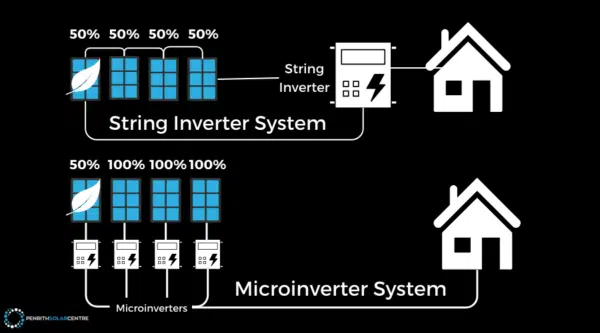
The importance of knowing whether it’s a microinverter or string inverter system will inform the choices you make in the repair and expansion of the system.
Repairs: Microinverters are warrantied for 15 years. There is the possibility that a microinverter could fail early in its life cycle, but this is an exception that proves the rule.
A string inverter will need to be replaced years before a microinverter. String inverters are often warrantied for 5 – 10 years depending on the manufacturer. It’s the workhorse of the system and will need to be replaced years before the solar panels.
Expansion: Because of the decentralised design of a microinverter and the ease of using the plug-and-play engineering of this technology, microinverters solar systems are easy to expand and upgrade if your solar needs are greater than the previous owner or if they change in the future.
The design of string inverter systems makes it difficult to expand an existing string system in the future. Oftentimes, a string system will need to be fully replaced if you decide to expand it in the future. You may or may not want to do this. Evaluating your energy needs and whether they change in the coming years will determine if you’ll want to do this.
When Was the System Installed?
Remember when we said that 30% of Australian homes have solar? We’ve been doing it as a country since the early 2000s. In the decade between 2010 and 2020, most Australian solar systems went up on roofs nationwide. Solar has really taken off here, and why wouldn’t it? There’s so much sunshine.
However, solar system technology has grown by leaps and bounds over the years. The house you want to purchase might have an inefficient system on it if it’s older. If it’s less than 5kW output or if the solar panels output less than 200W, then that system is out of date and may struggle to keep up with your energy needs.
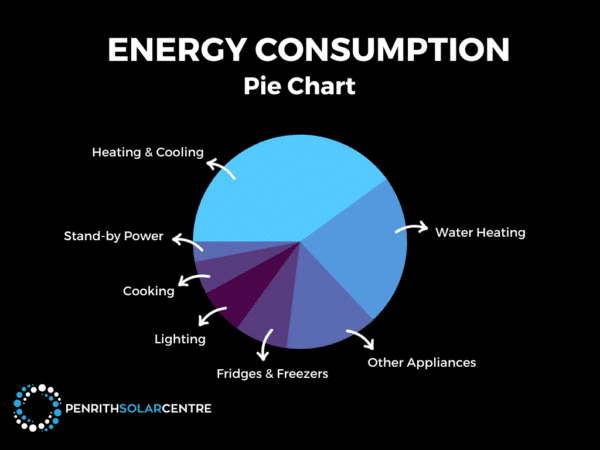
It doesn’t mean it’s a dud, it just means that you might need to upgrade your system at some point. Plenty of 5kW systems are fully capable of cutting down those energy bills. With the cost of electricity continuing to rise, however, you shouldn’t expect to see the same energy savings that a newer system provides.
When considering the age of the system, you’ll want to understand what type of equipment you might need to replace. Some equipment in solar systems is only compatible with specific brands.
You’ll want to investigate whether the company that manufactured the system components is still in existence and whether you’re able to find replacement parts should you need them.
Are the Warranties Transferable?
Warranties and paperwork for those warranties are really important. Most equipment warranties for solar systems are transferable, but you’ll need to confirm to make sure that the solar panels, inverter, and workmanship warranties can be handed over to you.
Subcontractors and solar sales companies come and go and have come and gone. It’s not unusual for a solar system to outlive the company that sold or installed it for the previous owner. Check to make sure they’re still in business.
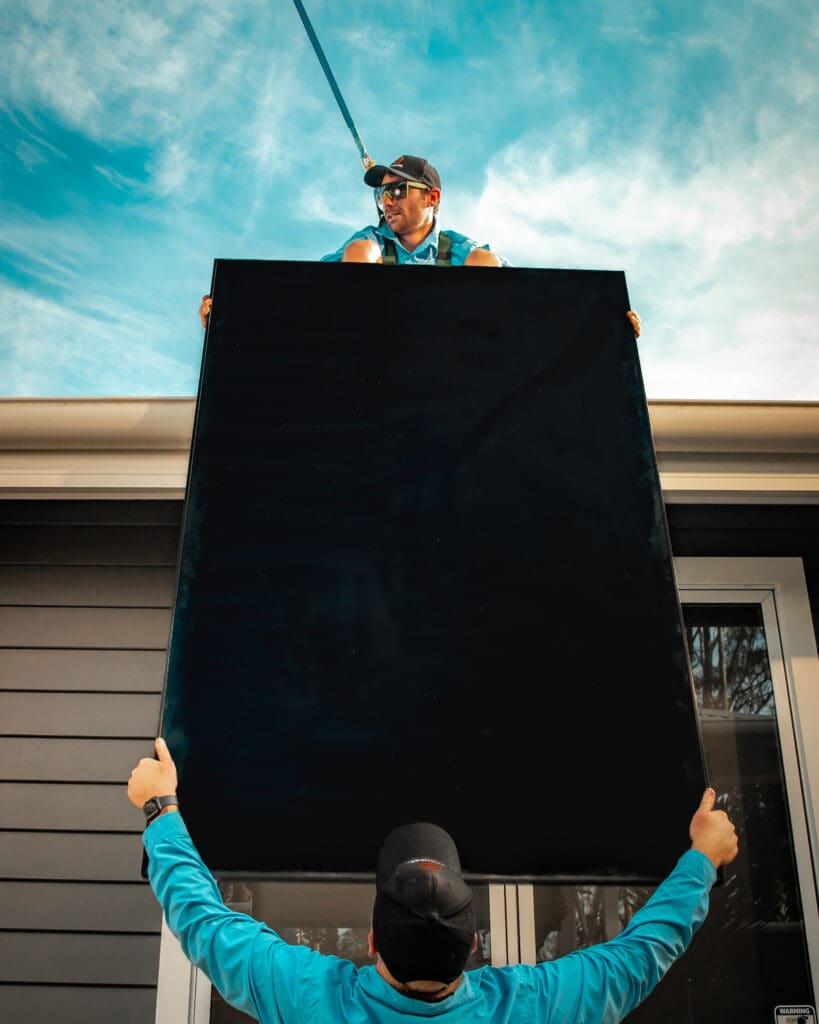
At Penrith Solar Centre, we transfer manufacturing warranties to the new owner and stand behind our workmanship warranty regardless of who owns the home. But we do require the new owner to work with us and provide whatever documentation they received from the previous owner.
Make certain to collect this paperwork if you’re able to. It will accelerate the process of getting your solar warranties fulfilled.
For more information on warranties, you might want to check out the following article titled, A Complete Guide to Solar Warranties.
Request a Free Quote & Solar Design With Us
How Many Kilowatts Does It Produce?
This question is about how much energy you can expect from your system. How much electricity will you get from the solar panels up on the roof?
A 6.6kW system, which has been a popular system size in Australia for years, will produce over 26kWh of daily electricity to use. An average family of four can generally estimate between 18 – 25kWh of daily electricity use. It’s a wide range because there are factors like location, time of season, and unique energy consumption needs. Not to mention the rising cost of electricity nationwide. The savings could be significant: the 6.6kW system we used as an example could generate up to $40 – 50,000 worth of savings in electricity for the lifespan of the system.
Larger systems are becoming more popular as Australians confront energy bill increases. The future of solar energy is evolving very rapidly as well. Electric vehicles and the need to charge them and integrated smart home technologies will change how much electricity a family of four might need.
There are a variety of factors that will influence how much electricity that hypothetical family of four will need and how much money a solar system might save them. Your best bet is to consult a reputable solar installer for specifics about what your energy needs might be. There are external factors that will influence this. These estimates are based on the current cost of electricity and that cost will certainly rise.
If you’re nervous about how much money a solar system will cost, you might want to read the following article on the Australian rebate scheme titled, How Does the Solar Rebate Work?
Considerations About Solar Batteries
Solar batteries are becoming more and more common in households in recent years. They’ve developed very rapidly to become a smart investment rather than a luxury item.
If the previous owner installed a solar battery in the home you’re about to purchase, you’ll need to know how old the battery is and how many cycles it has gone through. A cycle is how many times a solar battery fully charges to capacity and discharges all the energy stored within. The size of the battery and how much electricity the home consumes will determine how often it cycles.
It’s normal for a battery to degrade during its lifetime. This is just the scientific reality of solar batteries. Over time, the battery will lose the capacity to store as much energy as it did when it was initially purchased.
Warranties for solar batteries often have an either/or option for when they expire: a number of years or a number of cycles. For instance, the Enphase IQ Battery 5P has a warranty that covers 15 years or 6,000 cycles, whichever comes first.
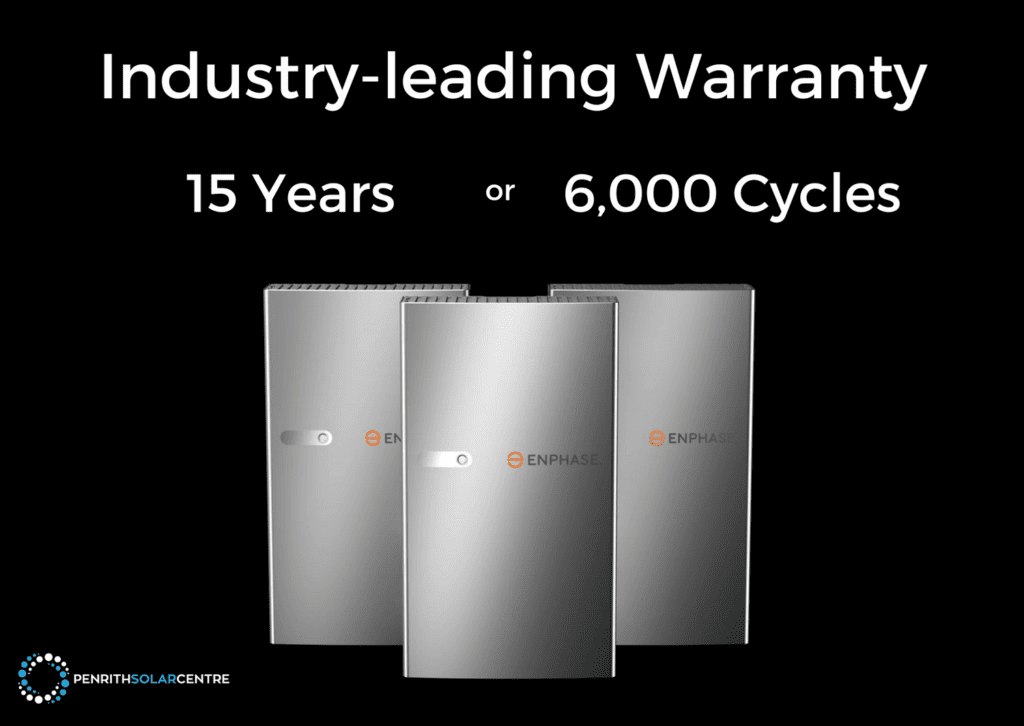
As we explained above, it’s crucial to get the correct information from the previous owner to ensure that the warranty is transferrable and covers the rest of the battery’s lifecycle.
If you’re interested in learning more about solar batteries, you might want to check out the following article titled, 7 Considerations for Choosing a Solar Battery.
Is It Worth Buying a Home with Solar?
Absolutely, yes!
You will not have spent any money on the installation of the solar system, and your electricity bills will be reduced or eliminated depending on the solar system you inherit.
You’ll want to ask the above questions to determine whether you’ll need to spend money replacing the system or any of its components. You’ll also want to have the correct information and documentation for any warranties that will potentially require fulfilment down the road. What type of system you’ll inherit and who installed it are also key components when it comes to upgrading the system in the future.
There are so many advantages to installing a solar system, but having it already installed is a modest but beneficial winning lottery ticket.
At Penrith Solar Centre, we’re focused on helping you get the most out of your solar journey. The research you do today will inform the choices you make years, if not decades, in the future. Whether you’re buying a new system or moving into a residence with an existing system, you’ll need to know its abilities and limitations.
If you’re interested in learning more about emerging solar system technology and the benefits therein, you might want to check out the following article titled, What Are the Benefits of a Microinverter System?
